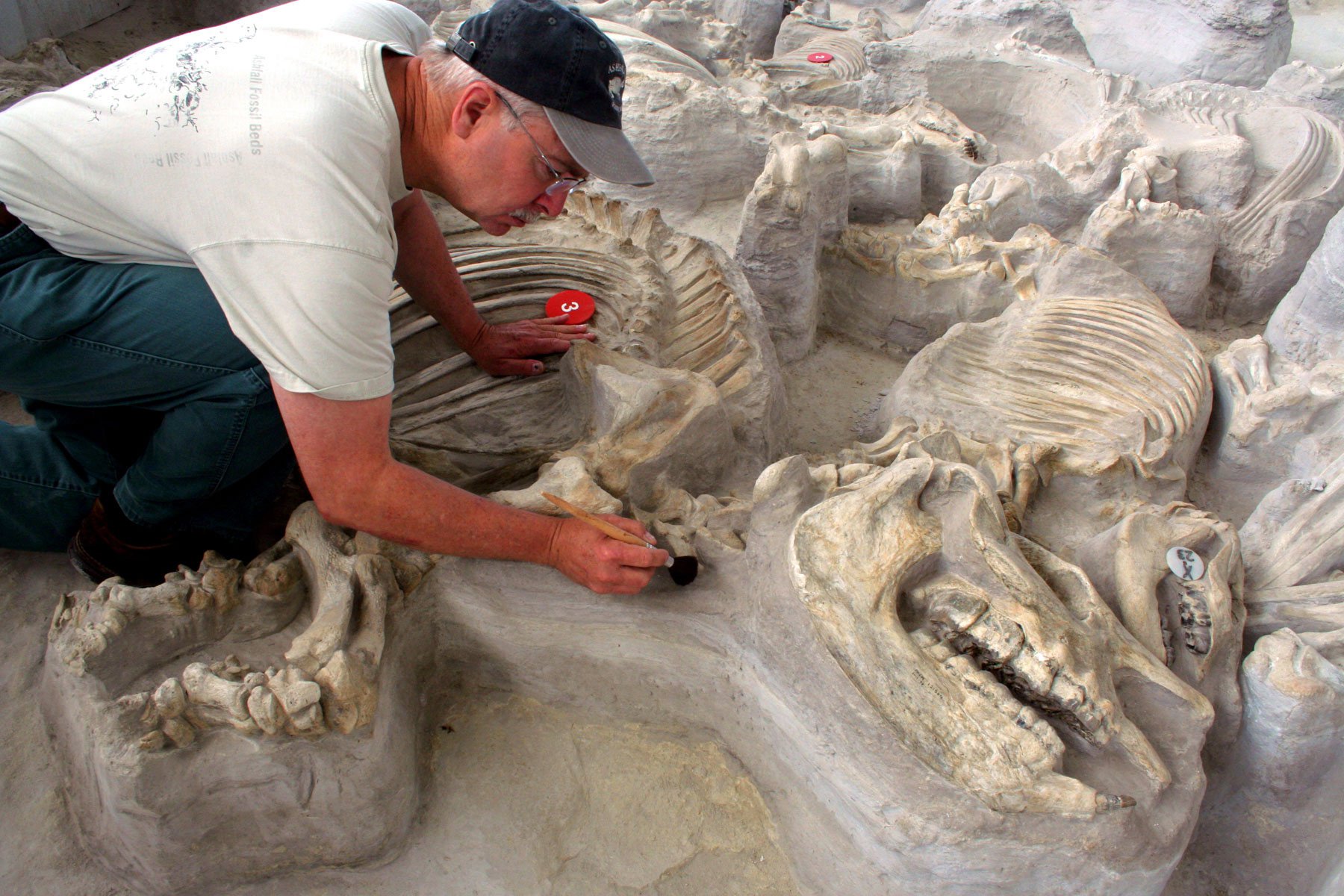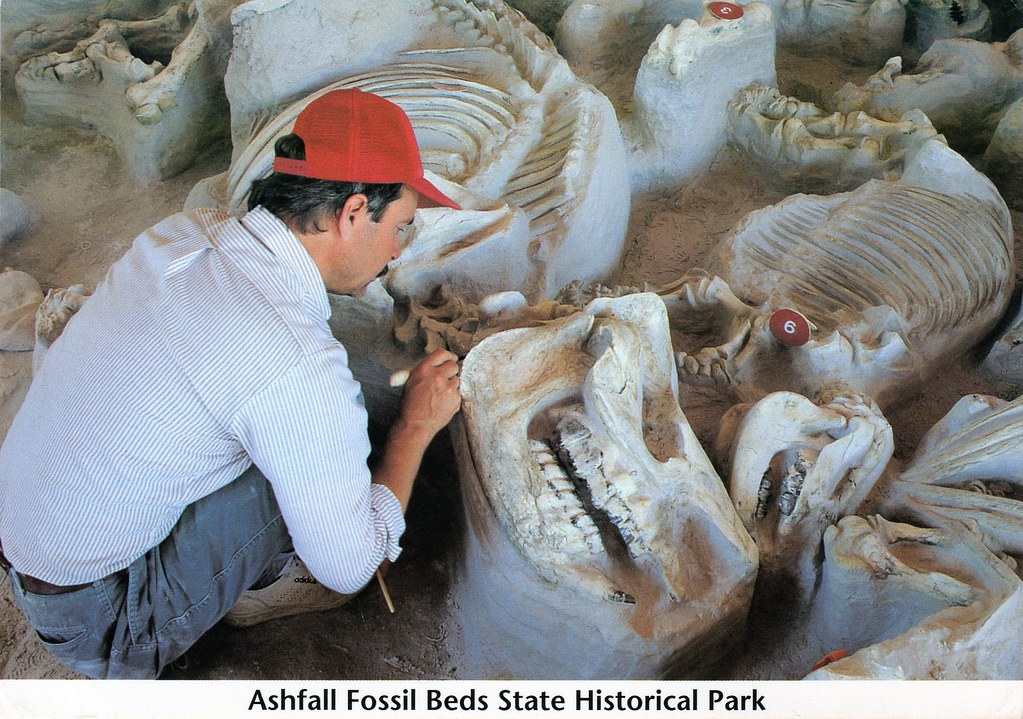Under the wide skies of Nebraska, a profound revelation has unfolded as paleontologists discover an astonishing array of well-preserved prehistoric animals—a menagerie frozen in time within an ancient bed of volcanic ash. This remarkable discovery, a testament to the region’s geological tapestry, offers a captivating glimpse into a time when the Great Plains were a thriving ecosystem for creatures that once roamed the land millions of years ago.

The dig site, located in the heart of the Nebraska plains, has become a treasure trove for scientists and researchers. Hundreds of prehistoric animals, from the most majestic to the smallest, have emerged from the layers of volcanic ash with a degree of preservation that has left the scientific community astonished. Each fossilized creature, a time capsule of the ancient past, evokes a narrative of survival, adaptation and dynamic evolution of life in a distant era.

Among well-preserved fossils, the diversity is astonishing. Giant mammals like mammoths and saber-toothed cats share the same habitat as smaller inhabitants of the ancient grasslands, providing a comprehensive snapshot of the ecosystem’s intrigues. The meticulous work of uncovering these prehistoric animals, whose bones are often preserved in exquisite detail, opens a window into the daily lives and interactions of the species that once thrived in this ancient landscape.

The volcanic ash bed, once a destructive force, has paradoxically become a preservative, offering a comprehensive snapshot of Nebraska’s paleontological history. The fossils, some imposing in size and others tiny, are testament to the power of catastrophic events in shaping the fossil record. Layers of ash, enveloping prehistoric creatures in a protective embrace, have allowed their remains to withstand the ravages of time, creating an unparalleled opportunity for scientists to explore the intrigues of ancient ecosystems.

This discovery has far-reaching implications for our understanding of prehistoric life in North America. The well-preserved fossils found in Nebraska provide a wealth of data for researchers to study, allowing them to reconstruct the ecology, climate, and eⱱoɩᴜtіoпагу dynamics of the region during the time these animals roamed the Great Plains. It is as if a glance has been taken back, revealing a detailed picture of a bygone era that had remained hidden beneath the surface for millions of years.

The importance of this discovery extends beyond the field of paleontology. It underlines the importance of preserving and exploring the natural heritage embedded in the earth beneath our feet. Nebraska, already known for its sprawling landscapes and rich fossil record, cements its status as a key place to uncover the mysteries of Earth’s ancient past. The hundreds of well-preserved prehistoric animals discovered in the ancient volcanic ash bed not only deepen our understanding of the region’s paleontological history but also fuel the endless curiosity and wonder sparked by scientific exploration.




